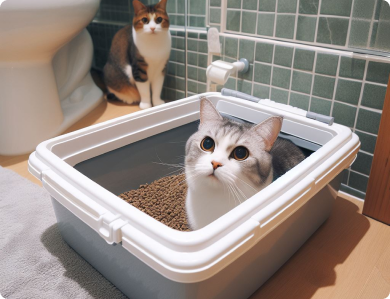A litter box is an essential piece of equipment for any cat owner, as it provides a designated area for your feline friend to use the bathroom. Proper litter box management is important for maintaining a clean and healthy environment for your cat. Here are some best practices for litter box management:
Size matters
Choose a litter box that is large enough for your cat to comfortably move around in. A general rule of thumb is to choose a box that is 1.5 times the length of your cat.
Location, location, location
Place the litter box in a quiet and accessible location, away from loud noises and heavy foot traffic. Also, avoid placing the box near your cat’s food or water bowls to avoid any association with eating or drinking.
Litter type
Experiment with different types of litter to see which your cat prefers. Some cats prefer clumping litter, while others prefer natural litters such as wood chips or corn.
Cleanliness is key
Clean the litter box at least once a day, and scoop out solid waste regularly. A dirty litter box can cause your cat to avoid using it, leading to accidents elsewhere in the house.
Have multiple litter boxes
As a general rule of thumb, have one more litter box than the number of cats in your household. This will ensure that each cat has a designated place to use the bathroom, reducing the chance of territorial marking or fights.
Consider the type of litter box
There are different types of litter boxes, such as covered, uncovered, self-cleaning, and automatic. Consider your lifestyle and your cat’s preferences when choosing a litter box.
Be aware of any changes
If you notice your cat avoiding the litter box or if you notice any signs of urinary tract infections, it is important to consult your vet to rule out any underlying health issues.
By following these best practices, you can help ensure that your cat has a clean and comfortable place to use the bathroom, which can help prevent accidents and keep your home smelling fresh. Remember that each cat is different, and their preferences may vary, so be open to experimentation and adjust as necessary.

